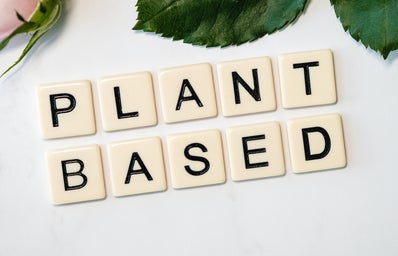Iron is a mineral that is essential for good health. Although every cell in the human body contains some amounts, it is vital for the hemoglobin red blood cells which transport oxygen around our bodies. The mineral also plays a great role in creating energy derived from nutrients.
Iron-deficiency anemia is a common result of an inadequate intake of iron through food. This is the most common form of anemia in Ireland. According to irishhealth.com, “it can affect one in five women of childbearing age, and 2% of adult men”.
While it is general knowledge that red meat such as beef is the most iron-packed food source, the consumption of it has decreased in the last few years. People are now looking to find other food sources without reducing their iron intake, whether it is for ethical or environmental reasons.
Recent findings of a Global Sensitivity Analysis (GSA) show that animal agriculture may be responsible for up to 87% of the man-made greenhouse gas emissions. With this in mind, it is important to know which foods are rich in iron for people who are vegan, vegetarian, trying to reduce their carbon footprint, or simply don’t enjoy the taste of red meat.
Heme iron is the most easily absorbed type of iron and is only found in meat, while non-heme iron is found in plant-based foods such as beans, lentils, dark leafy greens, tofu, nuts and seeds.
The dietary ingestion of vitamin C is vital for increased non-heme iron absorption. Because of this, typical breakfast foods are a great way to get iron.
For example, why not add some spinach, kale, or mint to your morning smoothie? Mixed with fruits such as strawberries, mangoes, kiwis, and peaches which are high in vitamin C, this is a great start to the day.
The high fruit intake as well as the iron will give you lots of energy. Another breakfast idea is oatmeal, again with some fruit. You can also add some flavour like cinnamon or a sweetener such as algarve syrup if preferred.
It is also a good idea to opt for fortified cereals, meaning that they have added vitamins and minerals which wouldn’t be naturally found in them. For those who enjoy a savoury breakfast, beans are an even better source of iron, whether you eat them on toast or as part of a full Irish breakfast.
Lunch and dinner are perfect for incorporating more dense and satiating iron-rich foods into meals. A good way to come up with meals is to start with a carbohydrate base such as rice, pasta, and potatoes, then adding a protein source such as chicken or tofu which contain iron, and finally adding things such as beans, leafy greens and lentils to top it all off.
Some quick meal ideas include a chicken or tofu salad with romaine lettuce or arugula with some tomato as a vitamin C source, a potato and chickpea curry with rice and added spinach or parsley, lentil soup, or a bean and rice burrito.
Once you have figured out what foods are high in iron that work for you individually, it is very easy to make up your own recipes. For snacks, dark chocolate contains a lot of iron, as do nuts and fortified protein and cereal bars. Consuming these as well as fruit throughout the day will ensure high energy levels.
Not every single meal needs to contain iron. The most important thing is to follow a well-planned and balanced whole-food diet. According to the HSE, men need 8.7mg of iron daily, while women need 14.8mg. If you still have concerns regarding your iron intake, it is completely normal to take a supplement. In fact, the HSE recommends it for people who struggle with anemia and for people who experience heavy menstruation.



